-
•
•
63 responses
I mean that question in terms of scriptural claims, especially related to the Old Testament. Readers may be aware of scholarly skepticism of the existence of major biblical figures and events and I’ve often gotten the sense from my fellow members and other Christians of seeing scholars with such views as problematic, secular people not properly holding biblical claims as they ought. I’m well aware of the limits of historical study, but also think that historical methods and lots of work by scholars as a whole do tell us something. I don’t think scholars in any field go about what… Read More
-
•
•
6 responses
Apologies for the length in advance. A lot of people had things to say about the Church and its members this month! Carr, Ellen Melton. “Fountains of Living Waters: How Early Mormon Irrigation Innovated the Legal Landscape of the West.” Oil and Gas, Natural Resources, and Energy Journal 9, no. 3 (2024): 361. There was no abstract, so I uploaded the PDF to GPT-4 and asked it to make a summary. Read More
-
•
•
7 responses

Longtime readers may recall that I started to do a series on “temple architectural heritages” a while ago. I eventually aborted it since the subject was too big and unwieldy. Still, I’m looking forward to the day when somebody puts together a glossy coffee table book with not just pretty pictures, but also the architectural history and insights of all the different temple designs. (Although the excellent website churchofjesuschristtemples.org/ is close). Still, I thought as a sort of coda to that enterprise I would provide a list of temples that, in my opinion, do a good job of incorporating unique,… Read More
-
•
•
22 responses
During the first half of the 20th century, Mormons were not only proud of their Church, but were proud to be Americans. Mormons tended to vote in similar ways to residents of the rest of the country. Thirty years later, in 2008, we moved back to Utah. What I found shocked me. Read More
-
•
•
55 responses
“I’m pro-choice because I believe in agency.” “Women should be free to choose.” “I’m personally pro-life, but other people should have the ability to choose abortion.” I hear these comments all the time from members of The Church of Jesus Christ of Latter-day Saints. Many loud voices popularize these claims; even prominent Latter-day Saint voices rally behind them. Because Latter-day Saints believe in agency, right? Read More
-
•
•
7 responses
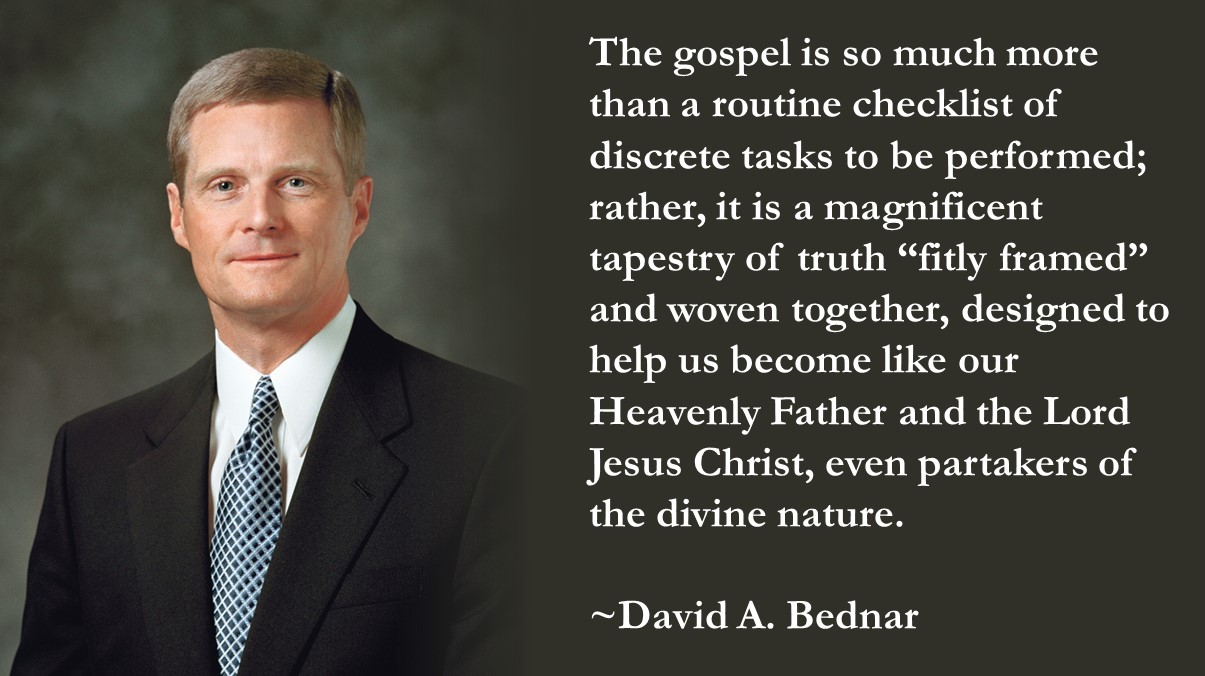
I recently worked on reviewing the addresses of Elder David A. Bednar to put together a David A. Bednar quotes page over at From the Desk. As I worked on it, I noticed some interesting patterns and other observations that I thought I would share. These include a standardized structure he seems to follow, some core concepts that he reiterates over and over, and his sources. Read More
-
•
•
9 responses
My own research played a role in the atheist conversion I described in previous posts. Like I said, I believe I’ve been able to track down the sources of all Mormon ideas from books to Joseph Smith, which, like I said, was something I’ve been generally okay with. Again, this was a gradual process for me that I felt I could make spiritual sense of, and concluded that any means that God used for the Restoration was okay with me. Yet every now and again I’d stop and notice how far I’d drifted from orthodoxy. I recently did a podcast… Read More
-
•
•
8 responses
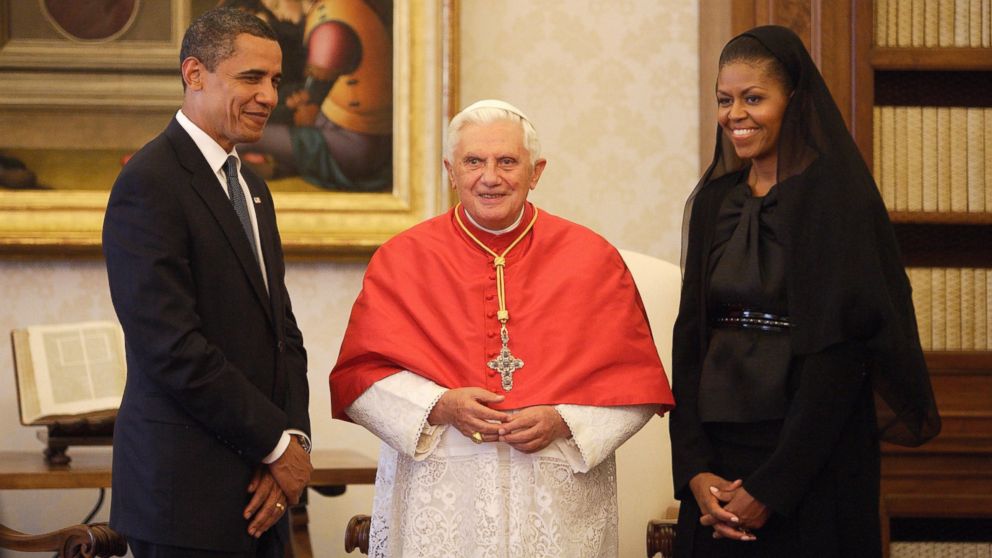
There are few issues in the Church as touchy as modesty. Every society has their lines for what is considered in poor taste on the revealing side or conversely too demure in the other direction, while the Church is consistently a few clicks to one direction on that continuum, making this one of those issues that puts us at slight tension with the background environment, even though the tension here is minor compared to, say, our exotic family forms of yore. A common response about our slightly more restrictive norms is to smirk about the difference between the Church and broader… Read More
-
•
•
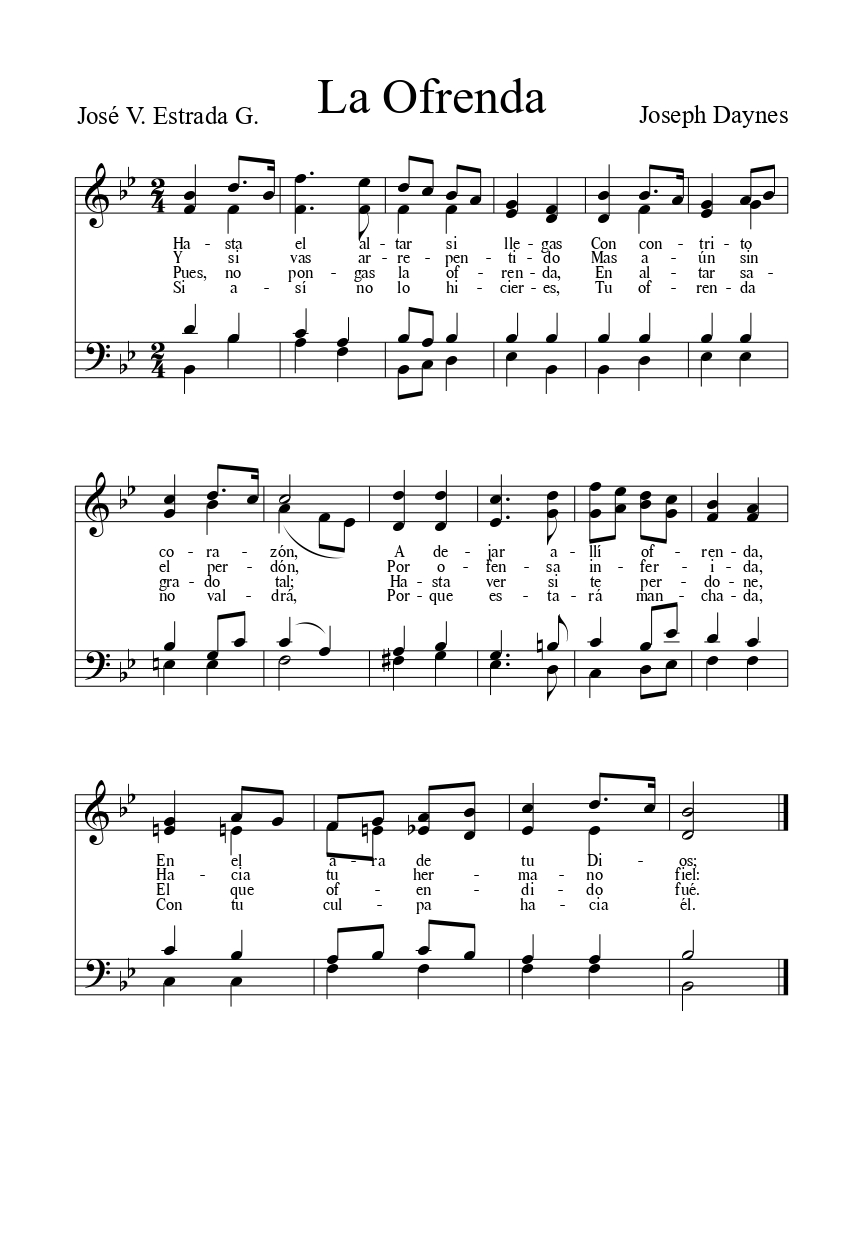
“La Ofrenda” is a sacrament hymn written by José V. Estrada G. It is possible that it was based on “Venid Hermanos En La Fe” by Edmund Richardson or drew inspiration from similar places. It is one of the hymns that was only published in the 1912 edition of the Mexican mission hymnals. Read More
-
•
•
One response
One of the more interesting finds among the dead sea scrolls is a text that was written onto copper rather than papyrus of animal skin. It’s a unique find, and has become an area of interest for the noted scholar George J. Brooke, who recently spoke with the Latter-day Saint history blog From the Desk about the copper scrolls. What follows here is a co-post to the full interview, covering some of what these copper scrolls are. Read More
-
•
•
4 responses

Stephen Cranney and Josh Coates This is one of a series of posts discussing results from a recent survey of current and former Latter-day Saints conducted by the BH Roberts Foundation. The technical details are in the full methodology report here. How often do members pray? This is one of those standard questions that are in most religion surveys and many generalist surveys. Still, the problem with virtually all such surveys is that the Latter-day Saint sample is too small to derive reliable estimates from. However, the Cooperative Election Study is one of the few surveys that has both… Read More
-
•
•
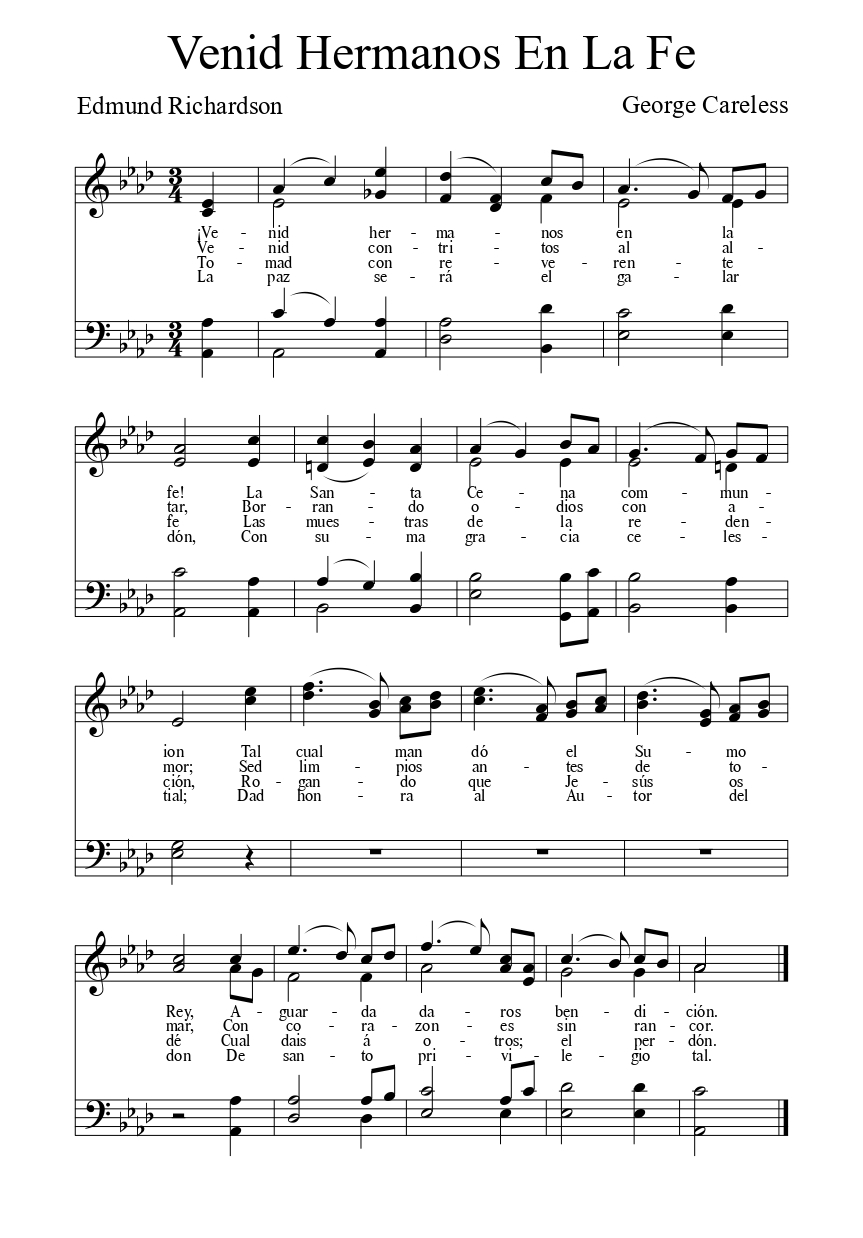
“Venid Hermanos En La Fe” is another example of the prolific hymn writer Edmund Richardson. It bears some notable resemblances to “La Ofrenda,” another sacrament hymn written by José V. Estrada G., though the Richardson text was written first. Read More
-
•
•
17 responses

Anecdotally, a common recurring dream among members (and a lot of ex-members) is the classic “return-to-the-mission,” where somebody is called to be a missionary again in middle age. Dream interpretation can be irresistible to conjecture about, but any particular interpretation is ultimately non-falsifiable. While it makes sense that that particular dream is manifesting some Freudian, deep-seated anxiety our current psychometric tools are way too blunt to test anything. It’s so widespread I suspect the return-to-the-mission dream means something psychologically, but I don’t know what. In my own version, the primary feeling is one of inconvenience and anxiety. I’m in… Read More
-
•
•
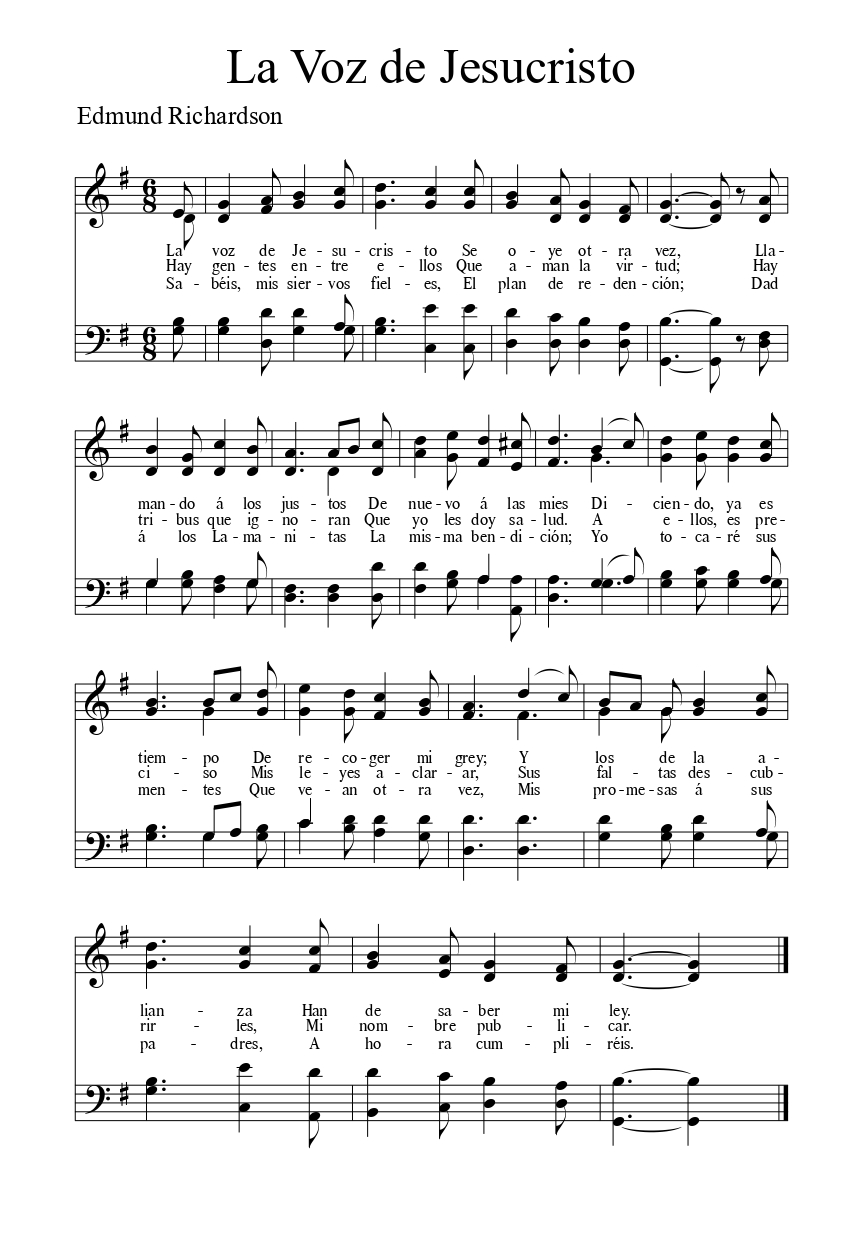
As mentioned previously, Edmund Richardson seems to have had a particular interest in linking indigenous Mexican peoples to the Book of Mormon narrative and “La Voz de Jesucristo” is the third example of this. For some relevant historical analysis, see the following posts: Read More
-
•
•
14 responses
In part one, I talked about coming to the conclusion of deciding to both be an atheist and also remain as bishop a year or so into my time as bishop. Part of the conundrum that I was working through was how I felt about my spiritual experiences. I mentioned in my last post that I was not feeling very content with where those experiences seemed to have led me. Furthermore, my PhD education had introduced me to some basics of cognitive science as my adviser had shifted her focus to that field. I talked about this in these posts… Read More
-
•
•
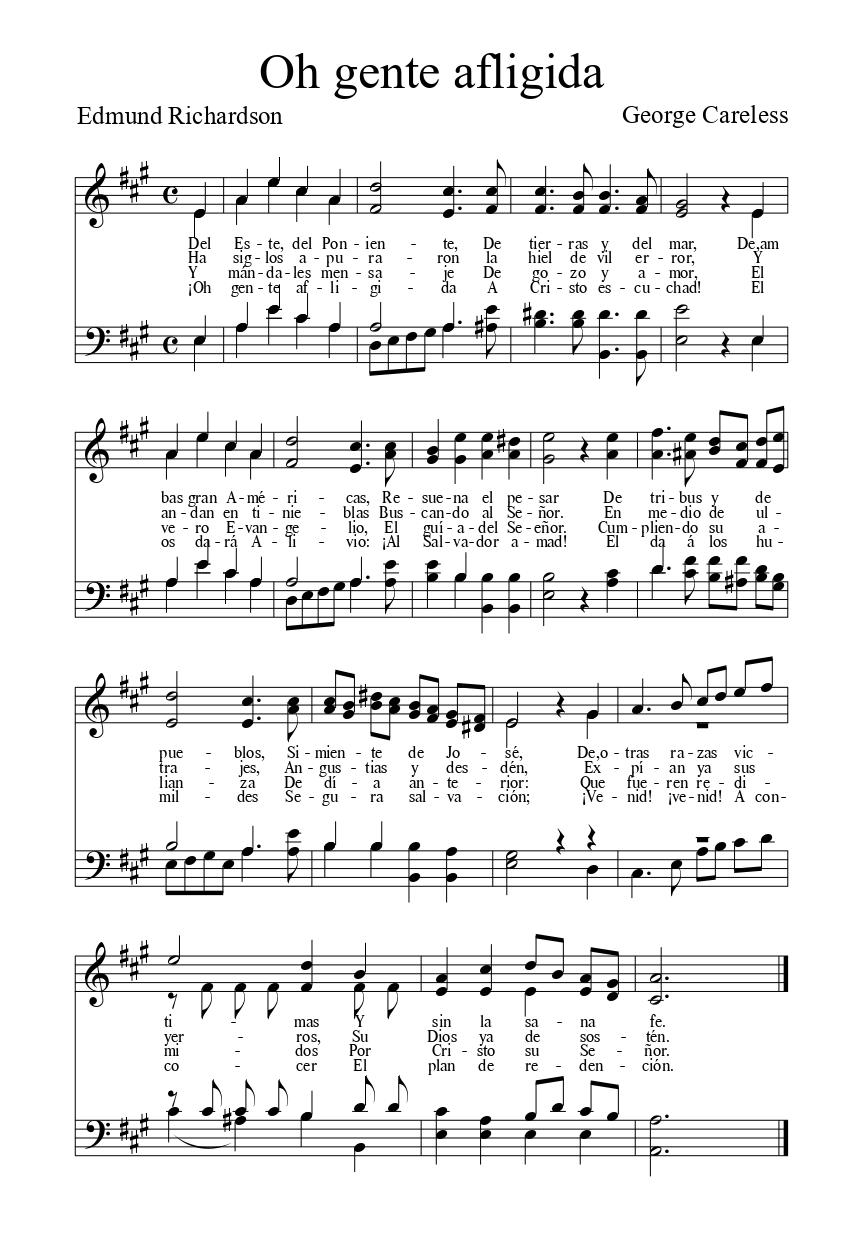
Edmund Richardson seems to have had a particular interest in linking indigenous Mexican peoples to the Book of Mormon narrative. In many ways, however, his approach was a colonizing narrative in which the indigenous peoples were ignorant, benighted peoples in need of civilizing through the efforts of Euro-American Latter-day Saints. “¡Oh gente afligida!” is just one example of Richardson’s poetry on the subject, with “La Obra Ya Empieza” and “La Voz de Jesucristo” being two other examples. For some relevant historical analysis, see the following posts: Read More
-
•
•
19 responses

Many years ago I retreated to Rock Canyon just above the Provo temple to pray about something I was stressed out about that, in my adolescent universe, was a big screaming deal. I retired to the beautiful night-time scenery of the Utah Valley lights twinkling below in the twilight fully expecting some kind of comforting spiritual atta-boy shoulder rub, and if all responses to prayers are really just psychological wish fulfillment as some say, that is probably exactly what I would have gotten with enough time and energy. Instead I got something along the lines of “stop crying, and get… Read More
-
•
•
7 responses
Richard Lyman Bushman’s most recent book focuses on presenting a cultural history of the gold plates. I’ve reviewed Joseph Smith’s Gold Plates in the past, but Dr. Bushman did an interview that was recently published on the Latter-day Saint history blog From the Desk that had some interesting tidbits. What follows here is a co-post to the full interview. Read More
-
•
•
11 responses
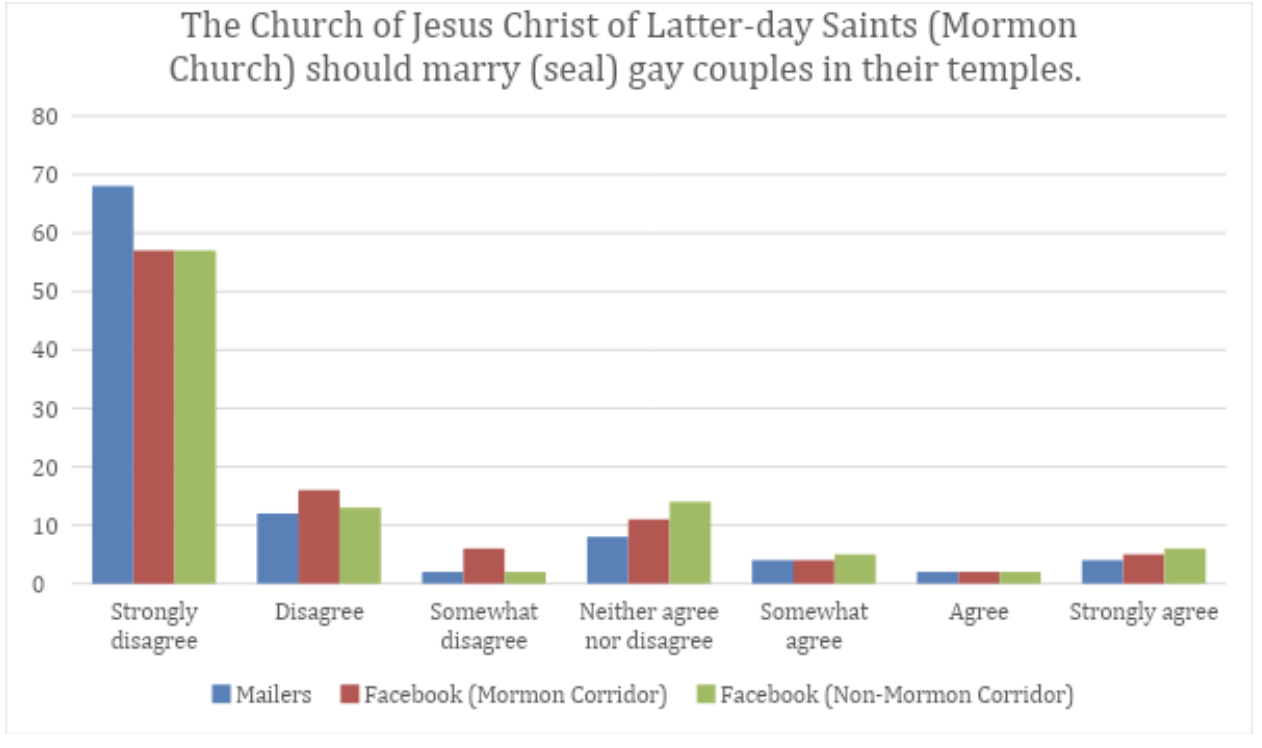
Stephen Cranney and Josh Coates This is one of a series of posts discussing results from a recent survey of current and former Latter-day Saints conducted by the BH Roberts Foundation. The technical details are in the full methodology report here. Polling data shows that a majority of Utahns support same-sex marriage (although, and we hope this goes without saying at this point, that does not mean that a majority of members do). Occasionally people grab onto these datum to suggest that a sea change is afoot on LGBTQ issues in the Church; some versions of this narrative imply that… Read More
-
•
•
11 responses
This post got a little long so I decided to break it in two. The title is a little bit click bait as I am not an atheist, but I do want to tell a story of what I call (in my head) “my atheist conversion.” Real atheists may find this disingenuous as my atheism lasted a very short period of time (half a day), but nonetheless it had a significant impact on me and I don’t know what else to call it. The impact was in a “pro-church direction,” and allow me to explain as such an experience frames… Read More
-
•
•
3 responses
Mormon Fundamentalism is a well known collective term for groups of Latter-day Saints who attempt to replicate the doctrines and practices of The Church of Jesus Christ of Latter-day Saints in the 1840 – 1890 era, most notably plural marriage. Less well-known, perhaps, are the figures who initially organized and developed the Fundamentalist Mormon movement, such as Joseph White Musser. In a recent interview at the Latter-day Saint history blog From the Desk, Cristina Rosetti discussed some of who Joseph Musser was and what his lasting legacies have been. What follows here is a copost to the full interview. Read More
-
•
•
11 responses
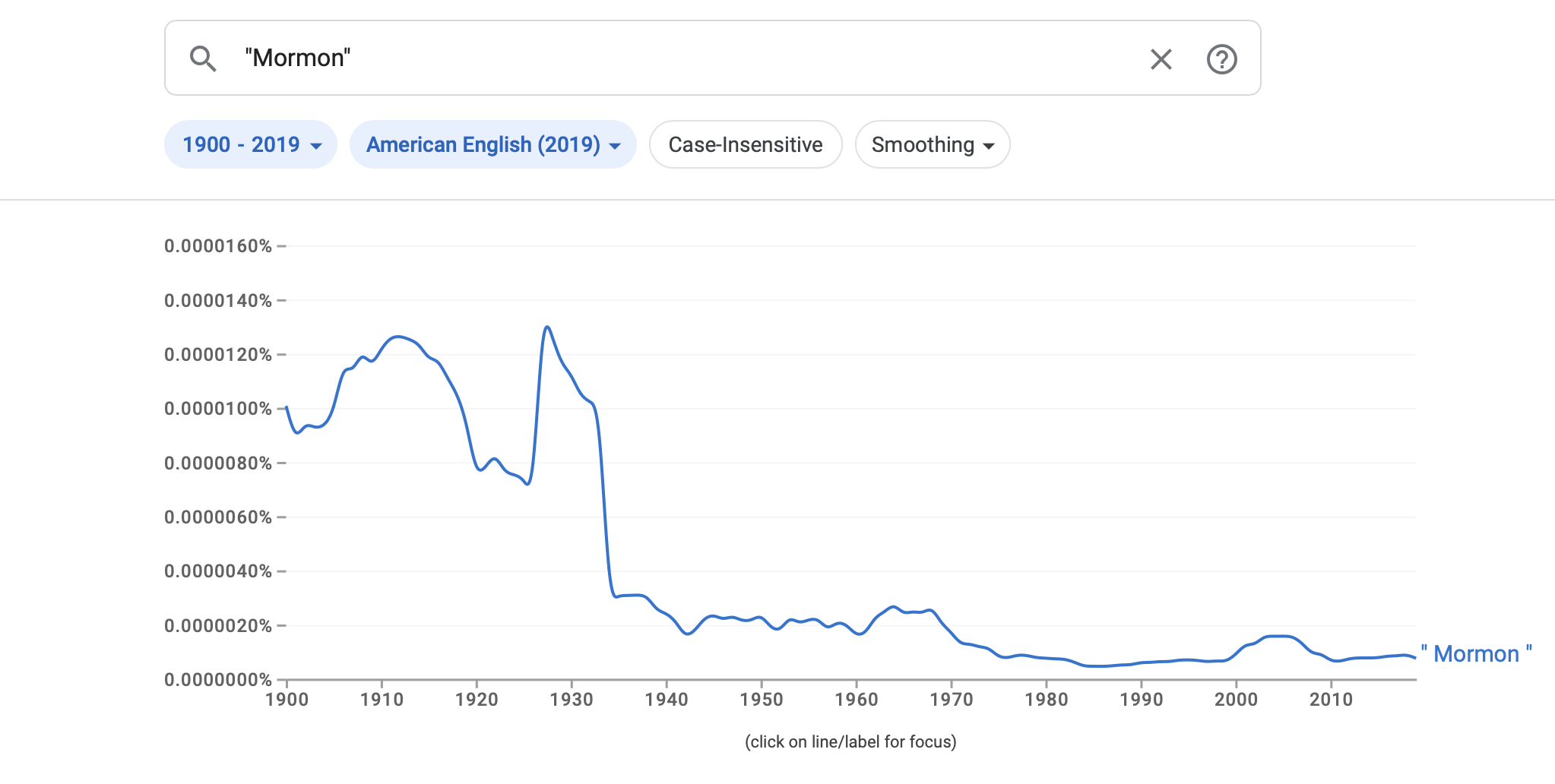
I was playing around with Google Ngram viewer, a tool that allows you to see the relative frequency of words across time in books, and came across the fact that we’re actually much less interesting in the year 2024 than we used to be. While it seems like the gentiles have this prurient preoccupation with our housewives, swingers, soaking (not a thing, for the umpteenth time), and baptisms for the dead, this probably doesn’t hold a candle to the old days when we were committing murders that Sherlock Holmes had to solve, or kidnapping the fair maidens of Britannia for our… Read More
-
•
•
7 responses
The Heart of the Matter, by President Russell M. Nelson, is a book to live by. It serves as a collection and presentation of his core messages as president of The Church of Jesus Christ of Latter-day Saints and provides guidance for both belief and living as a member of that church. Read More
-
•
•
2 responses
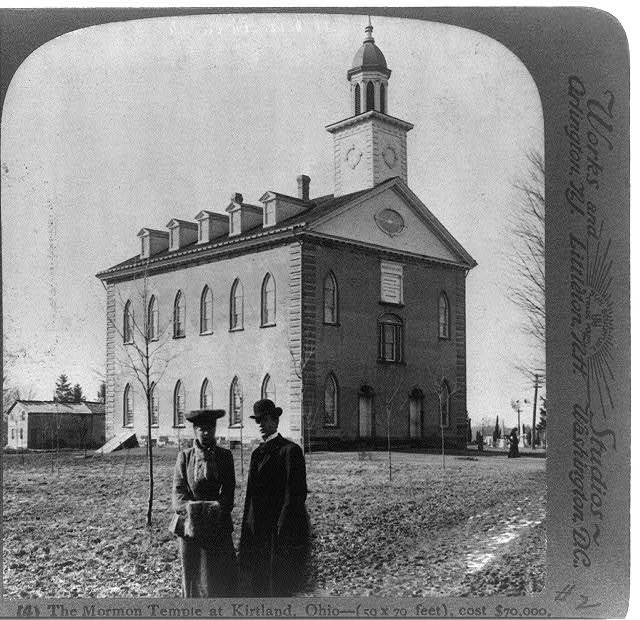
The House of the Lord in Kirtland, Ohio has been a major topic in the news as of late, thanks to the recent transfer of ownership between Community of Christ and The Church of Jesus Christ of Latter-day Saints. On the very same day that the transfer was announced, the Latter-day Saint history blog From the Desk shared a post discussing the history of the Kirtland Temple. What follows here is a co-post to that discussion. Read More
-
•
•
9 responses
Note: None of this is an April Fool’s Joke, it just happens to be the day we had a spot available in the queue. So far the three main AI use cases that have achieved liftoff are Large Language Models, text-to-image, and translation (Supposedly OpenAI has achieved text-to-video that is so good that multimillion dollar movie production investments are being cancelled. Still, for some reason Open AI has not actually released “Sora” to the public, so until we can play around with it it’s hard to know what to make of the hype). However, text-to-music has just had its breakout… Read More
-
•
•
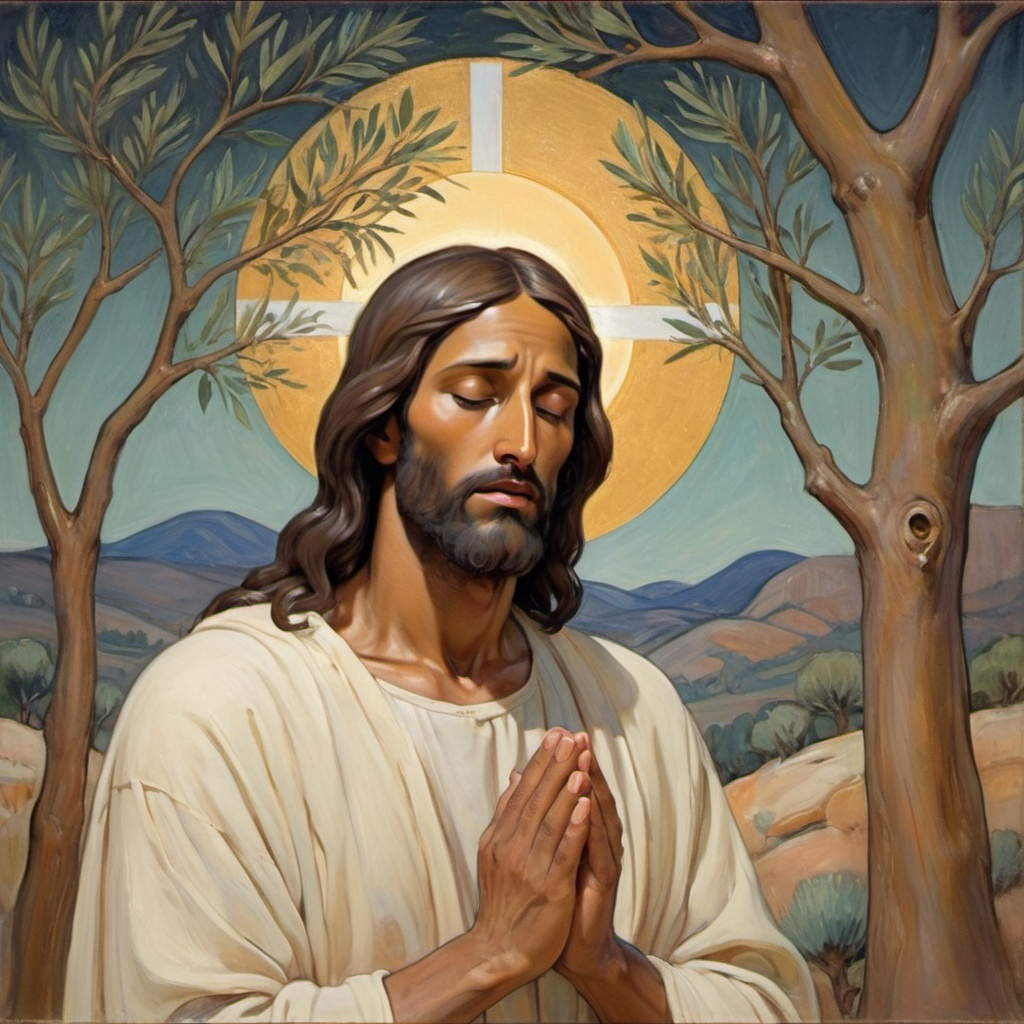
The Atonement of Jesus Christ is central to our faith and also central to the message of the Book of Mormon. What exactly, however, does the Book of Mormon say about the Atonement of Jesus Christ? In a recent interview at the Latter-day Saint history blog From the Desk, Nick Frederick discussed Atonement in the Book of Mormon. What follows here is a co-post to the full interview. Read More
-
•
•
3 responses
Sins of Christendom: Anti-Mormonism and the Making of Evangelicalism Reviewed by our own Chad Nielsen. Read More
-
•
•
29 responses
A little bit more about my own story relating to developing some alternative views of the church and coming to gain a as I said testimony of what I see as an “imperfect” church. The series I’m working on at the JI gives come context for ways in which historical research has influenced me, and over time I’ve seen myself becoming increasingly different. Spiritual experiences, however, have helped me to be okay with that, though the journey has been a struggle at times. I’ve felt a sense of calling to find ways to make my research helpful to others, but,… Read More
-
•
•
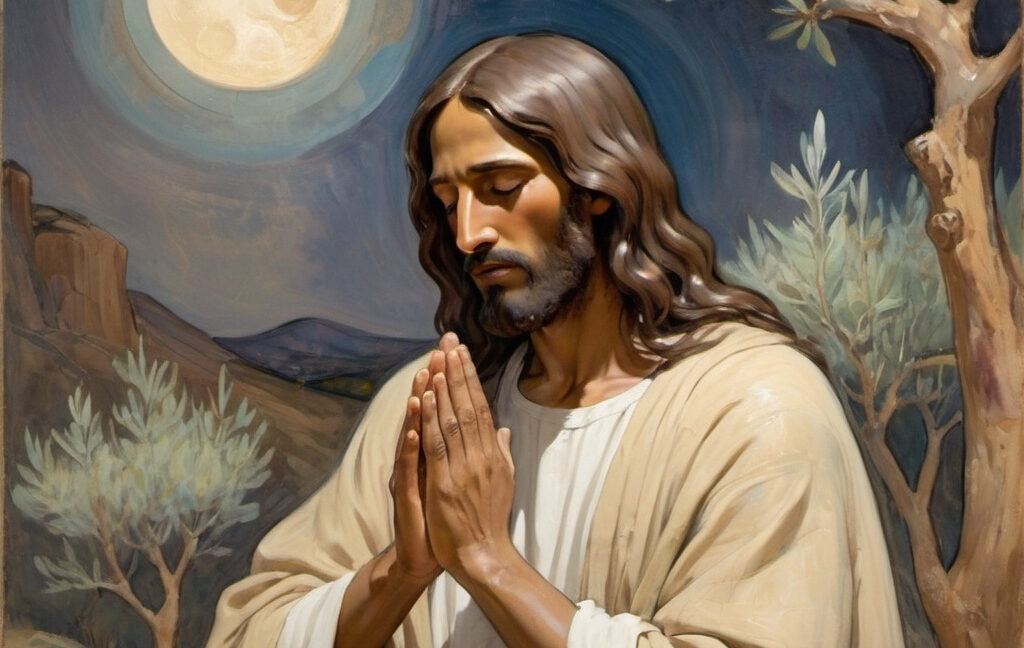
As we are in Easter season, it is appropriate to ponder on the life, teachings and Atonement of Jesus Christ. One of the best talks given by Latter-day Saint leaders on the subject is “The Purifying Power of Gethsemane”, Elder Bruce R. McConkie’s final testimony. The talk was discussed in a recent post at the Latter-day Saint history blog From the Desk. What follows here is a copost to the full discussion. Read More
-
•
•
15 responses

Scene from Jonathan Edwards’ “Sinners in the Hands of an Angry God” I’m not much of a theologian. Some of this is part Joseph Smith saying that if you stared into heaven for five minutes you would know more than has ever been said on the subject, and some of it is Aquinas’ cryptic comment near the end of his life after some sort of numinous experience that all of his work was straw. It also just seems very convenient for intellectual types that God’s system lends itself to the kind of puzzles and mind games that they find interesting.… Read More
